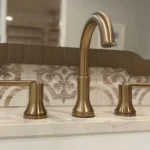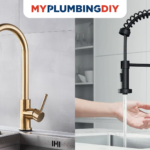This post may contain affiliate links. If you use these links to buy something we may earn a small commission. Thanks.
My wife and I live in Texas and over the last couple of years we’ve had some major freezes! If you aren’t careful your pipes will burst in a freeze.
The key is to drip faucets so they keep constantly running. This will prevent your pipes from freezing over.
But you might be wondering how many faucets to drip in a freeze. We interviewed a couple of plumbers to get their best advice!
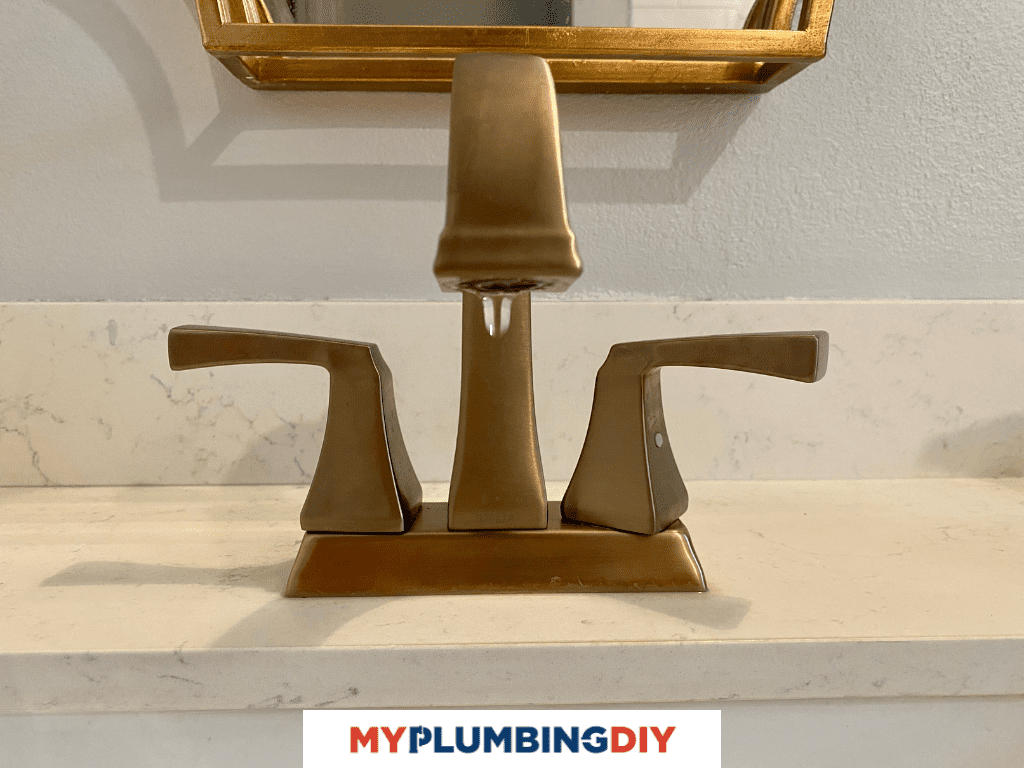
How Many Faucets Should You Let Drip in a Freeze
The best way to keep pipes from freezing is to have all of your faucets on an exterior wall dripping slightly. This will keep a tiny amount of water running through your pipes which will prevent them from freezing. At the very least, make sure to drip the faucet that is furthest from the water connection to your house.
Aim for 5–10 drops per minute.
5 Reasons You Should Let Your Faucets Drip
1. Prevents pipes from freezing and potentially bursting
When pipes freeze during extremely cold temperatures, the water inside expands by an additional 9% in volume, which can cause pipes to burst.
Allowing your faucet to drip is one way to help mitigate this, as it keeps the water in your pipes from becoming stagnant. No matter what kind of bathroom faucet you have, you should run them.
2. Helps maintain water flow through the pipes
Keeping your water flowing in cold temperatures is important as it helps reduce the risk of blockage from frozen water.
Once this occurs, it can be problematic trying to successfully locate and remedy this blockage to restore water function.
3. Reduces pressure buildup in the pipes
Allowing your faucet to drip during cold weather can help to prevent too much pressure from accumulating in your pipes caused by the presence of ice.
Even with a small flow of water, in extreme temperatures you are still likely to see some level of freezing occur. By allowing a steady stream of water flow, you can help keep that pressure at a manageable level.
4. Provides a small amount of heat to the pipes
When the temperature outside a home drops to sub-zero temperatures, pipes in your system become susceptible to freezing. However, if you allow a faucet to drip, it can generate enough heat to prevent this from happening.
This is because often the water is warmer than the outside ground temperature. Friction generated from within the pipes can also have a minor thermostatic advantage.
5. Can save you money in the long run by avoiding costly repairs and water damage
Not only does a burst pipe come with an expensive price tag due to potential water wastage, but it can also cause a great deal of damage to your home.
When water leaks into walls it can structurally compromise your home, as well as cause irreversible damage to your soft furnishings. This can prove costly to fix and replace. If you do end up having to get a new faucet someday, check out our guide on the best faucet brands!
5 More Ways to Keep your Pipes from Freezing
1. Insulating pipes
To prevent costly water bills, I find that insulating pipes is a great alternative to letting your faucet drip.
Created from materials such as wool, foam, or rubber, this insulation helps ensure your pipe temperatures remain consistent. It does this by minimizing the amount of heat escaping in colder environments. You can also use foam pool noodles to warp around them!
Insulating your pipes also helps combat condensation, and acts as a noise-reduction tool.
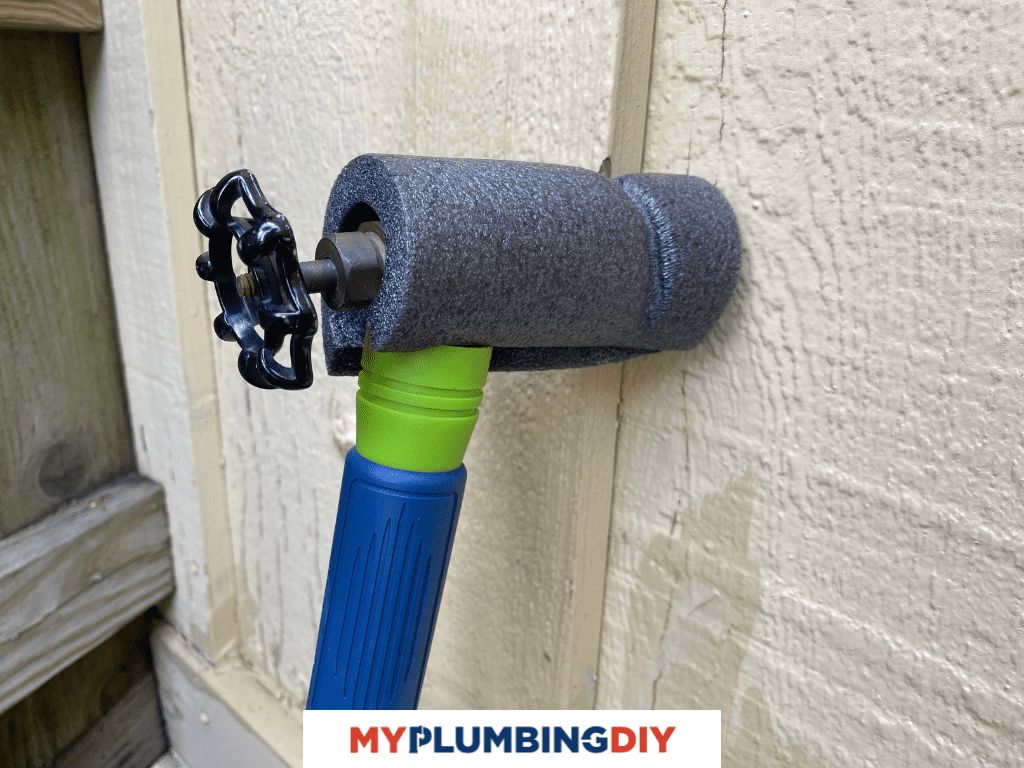
2. Installing electric heating tape or cable on pipes
Known as the gold standard for those living in the harshest environments, this electrical option is considered more efficient at preventing pipes from freezing.
This is due to the fact that it provides a steady stream of heat, with the added benefit of thermostat control.
It’s also considered a relatively cost-effective option that’s incredibly versatile and easy to install.
3. Closing all windows and doors tightly to keep cold air out
Although it’s not an exact replacement for other prevention techniques, by ensuring windows and doors are tightly shut during cold weather, you can help warm your home.
Where possible, you should double-glaze and make sure your home is well insulated, as this additional measure helps lock in that warmth.
4. Using a space heater
Keeping a space heater close enough to exposed pipes can help to keep them warm and make sure they don’t freeze. They’re generally used for exterior walls or pipes located inside cupboards.
Although they may be efficient at what they do, their electricity usage is often higher than other prevention methods, making them a more costly option.
For that reason — as well as safety concerns — this wouldn’t be my go-to recommendation.
5. Keeping cabinet doors open to allow warm air to circulate
Opening the interior and cabinet doors of your home is a simple and easy step to take. This helps warm air circulate throughout your house, which can help protect your pipes from freezing in the cooler months.
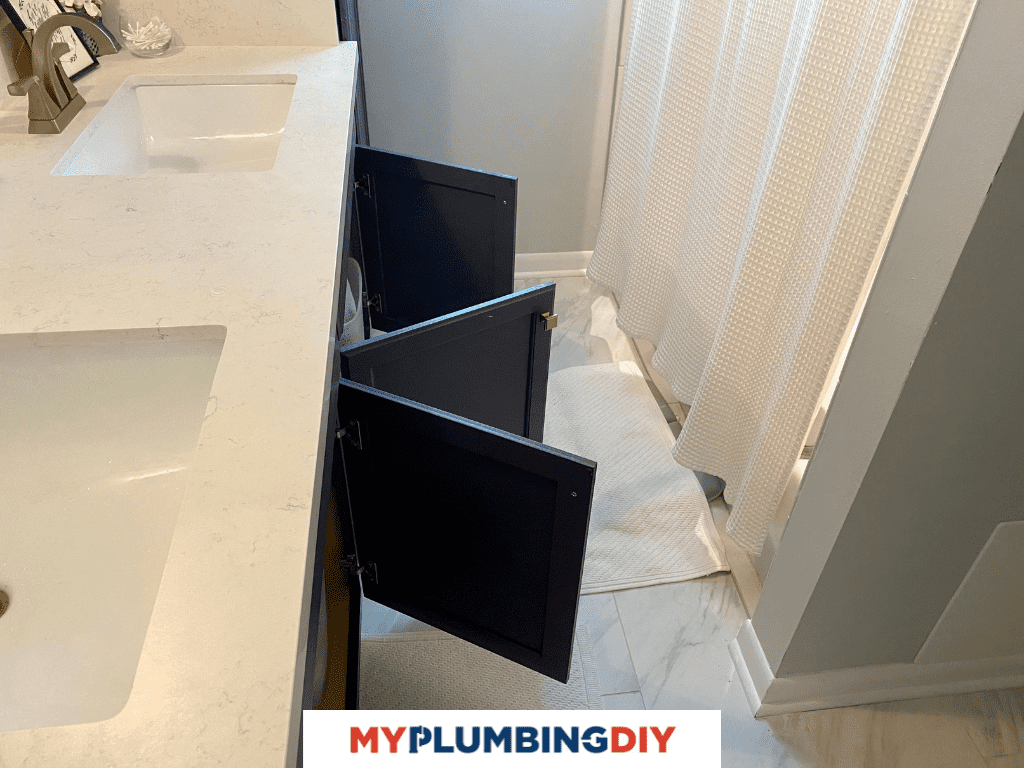
Common Questions About Dripping Faucets in a Freeze
The temperature you should keep your house at to ensure your pipes don’t freeze is a minimum of 55°F (12°C). This should be consistent throughout your house, including areas that aren’t common living areas, such as basements and bathrooms.
A dripping faucet wastes very little water, especially in contrast to the large quantities of possible water waste if your pipes happen to freeze and burst.
You should not leave faucets open when the water is turned off. This is due to the possibility of air accumulation in your pipes.
How long it takes for pipes to freeze will vary, depending on your home and the environmental conditions. Generally, if temperatures remain below 20º for more than 6–8 hours, most pipes are very likely to freeze.
Final Verdict: How Many Faucets Should you Drip in a Freeze?
The biggest risk to your plumbing in a freeze is bursting pipes. If they burst then it can create a leak in your pipes and if it’s behind a wall or in your walls then it can cause a ton of damage.
It’s best to drip your faucets, especially if they are on an exterior wall.

